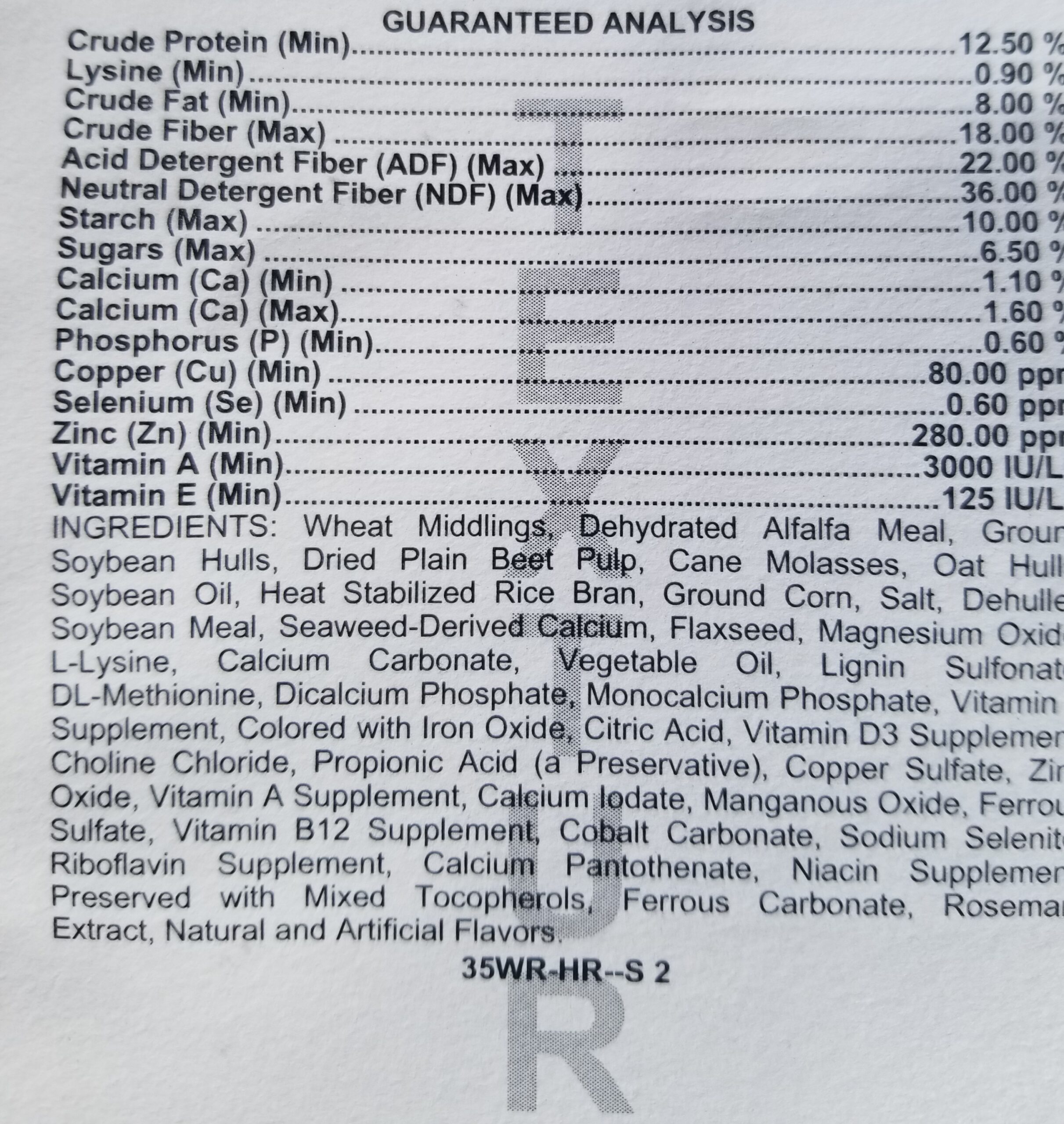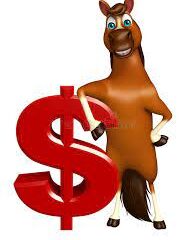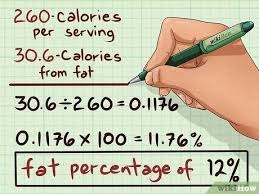Understanding Horse Feed Tags

Every bag of commercial horse feed has a feed tag attached. A few companies print their feed tag information directly onto the bag. This information can be both extremely useful as well as misleading.
Feed tags are largely misunderstood by consumers and this article should help provide some insight into what a feed tag tells us as well as what it does not.
The Role of AAFCO
The layout of and information provided on livestock feed tags has been determined by the Association of American Feed Control Officials. Compliance with AAFCO guidelines is voluntary but most state agricultural departments demand compliance of the AAFCO guidelines for registered feed mills.
The entire manual for feed tags may be downloaded by following this link:
It’s a very long and exciting read and I can’t wait for the movie to hit theaters!
Of course, it is very detailed and boring unless you are a feed nerd but I’ll give you the high points here and you are welcome to drill into the details at your leisure.
You will see the term “compliance” used instead of “regulation” because livestock feed, especially for horses, has very little regulation. Since horses are considered non- human food livestock there are virtually no restrictions on what a horse can be fed or injected with.
AAFCO requires certain information be contained on a feed tag in order for that tag to be in compliance.
The Purpose of Feed Tags
The first thing to know about feed tags is that they are not meant to guarantee the performance of the feed or the efficacy of the ingredients. Feed tags must display levels of essential nutrients and ingredients that can be verified by laboratory testing of the feed in each individual bag.
Each individual bag is subject to random testing by a state department of agriculture. When the lab results come back that the feed is out of compliance with the feed tag there are consequences for the feed mill.
Don’t get a false sense of comfort. The department of agriculture is not testing for nor is it interested in quality or efficacy of the ingredients but only that the feed complies with what is listed on the tag. If a tag lists a minimum of 12% protein a test will verify that value. The bioavailability of that protein is of no interest to the agency.
This is the reason why two feeds with an identical Guaranteed Analysis can deliver very different levels of performance.
What is Required on a Horse Feed Tag?
I cut and pasted this list from the AAFCO manual so it is verbatim.
The product name and its brand name, if any.
The purpose statement for the feed (identifying specific species and animal class(es)).
The guaranteed analysis statement.
The ingredient statement.
Directions for safe and effective use (commonly known as “Feeding Directions” or “Mixing Directions”) and any required precautionary statements to enable the safe use of the product by users with no special knowledge of the purpose and use of the product.
The manufacturer’s or distributor’s name and address.
A quantity or net weight statement, in both standard (avoirdupois) and metric units.
Each of these is a straightforward requirement for compliance but there is only so much you are able to fit on a feed tag so some of these statements will not be very helpful on their own.
The Purpose Statement
The purpose statement for Purina Healthy Edge is right at the very top of the tag. “FEED FOR MAINTENANCE, PERFORMANCE & SENIOR HORSES THAT CAN CHEW AND DIGEST HAY OR PASTURE”.
Well that narrows things down to just about every horse we know! This purpose statement is a good description of Healthy Edge as an all around feed for mature horses with no special needs.
Notice it doesn’t include “growing” horses. Healthy Edge doesn’t have the nutrients for weanlings to three years old and is not recommended for that application.
The other noteworthy note is “HORSES THAT CAN CHEW & DIGEST HAY OR PASTURE.” That’s pretty clear. Healthy Edge is not a complete feed and is designed to be included as a supplemental feed to a primarily forage diet.
We now know what horses the formulation of this feed was designed for but not how to feed it. That will be covered in the directions for safe and effective use but we will look at that later.
The Guaranteed Analysis
The GA is the most important part of a feed tag and the least understood.
The GA lists values by either weight or percentage of the total feed by volume. The only thing the GA assures is that when tested by a lab the feed will meet the values on the tag.
There are 11 essential nutrients that MUST appear on the GA for all equine species. These nutrients are listed in the AAFCO manual. The nutrients that most people are familiar with are Protein and Fat. Sometimes people will pay attention to Fiber.
There are some other nutrients that are optional so a feed company is not required to list them in the GA.. However, IF THE MILL CHOOSES TO LIST THESE NUTRIENTS THEY ARE LIABLE FOR THEIR COMPLIANCE.
This note is most important when discussing sugars and starch in feed. When a feed producer voluntarily lists sugars and starch on their GA they are liable to comply with the maximum values they provide. This should beg the question for the feed producers who loudly display NSC levels on their websites but refuse to be held accountable by listing sugars and starch on the feed tag.
Another item to look for is Lysine. Lysine is the limiting essential amino acid for equines and is important for equine fitness. If Lysine is not listed on the GA as a minimum value then it probably isn’t provided in sufficient quantity to be effective.
One last trick of the trade is the level of selenium in feed. If a feed is truly designed to be a complete feed selenium will be 0.3 PPM on the GA. A concentrated feed will be 0.6 PPM. This is significant because overfeeding concentrated feed might result in selenium toxicity.
The Ingredient Statement
The biggest misconception about the list of ingredients is that it must be in order of volume included. This is NOT the case for livestock feed. Ingredients for livestock feed can be listed in any order.
Some feed companies make a big deal out of claims of “fixed ingredients”. This is a discussion for another time.
Unless you really know what you’re looking for, the list of ingredients won’t tell you much. Some of the obvious ingredients may make a difference in that if you have a horse with an allergy to oats you want to look for oats on the list. On the other hand, if you don’t know the difference between “ferrous oxide” and “ferrous carbonate” the list of ingredients isn’t going to tell you much.
Feeding Directions
This is probably the least useful item on the feed tag because it is very subjective when trying to determine proper feed rate for a horse.
Determining the feed rate for other livestock is much easier than for horses because there aren’t as many variables.
If you’re feeding sheep then a mature sheep of a certain weight will require a specific amount of supplemental feed because a sheep doesn’t have a “work” component.
A big factor in feeding horses is the amount of work they do and one owner’s light work is another owner’s heavy work. Other factors can contribute to the feed rate of horses such as teeth, parasites, quality and quantity of forage.
Feed rate is without question where owner’s run into trouble with commercial feed but the feeding directions are required and so appear on either the bag or the feed tag.
Horses Don’t Eat Feed Tags
Feed tags are important but they can be misleading. The fact that feed tags can be misleading enables companies to use them to intentionally mislead people.
Have you ever had a feed store or mill employee compare the feed tags of a $25 bag of premium feed to a tag with a virtually identical GA on a bag of $18 feed telling you that it’s the same feed but with the premium feed you’re paying for advertising and expensive bags?
They are misleading you. I have tested many of these feeds from competitive local mills and the analysis clearly shows that although the tags are almost identical they are not close when it comes to reality.
Feed tags don’t tell you the quality of the ingredients. Premium feed companies test every load of ingredients that arrive at the mill. When a truckload of soybean meal shows up a sample is pulled and the driver will wait until the mill lab has completed testing. When the load of commodities fails the test at a premium mill the driver goes down the road to the next mill who will buy it and use it in their feed.
Feed tags don’t tell you the amount of research that went into the feed. Nor will they tell you how well that feed will perform.
Feed tags are certainly helpful in determining our feed choices but feed tags have their limits.
If you found this information helpful please consider becoming a patron of Jim the Feed Guy by following this link to Patreon.
https://www.patreon.com/jimthefeedguy?fan_landing=true
Thank you.



0 Comments